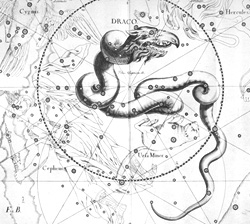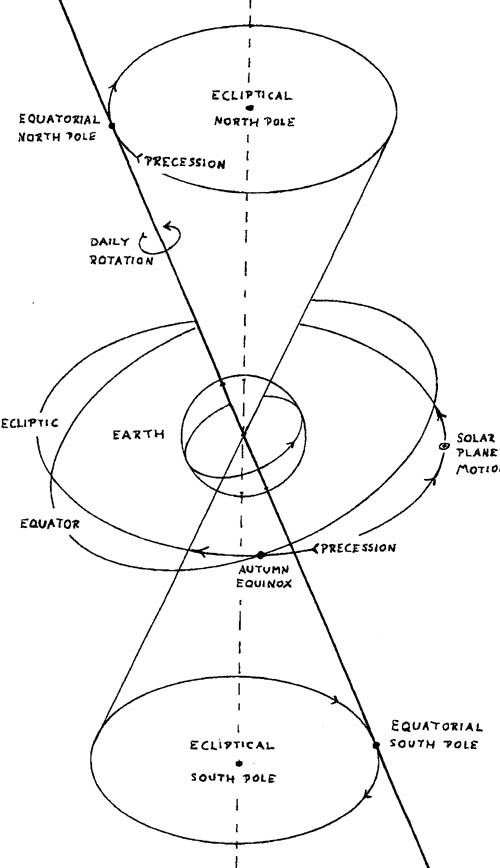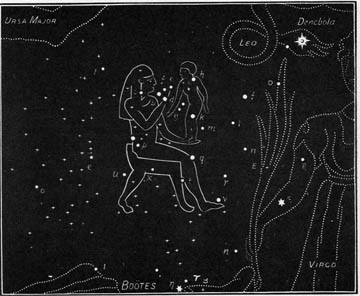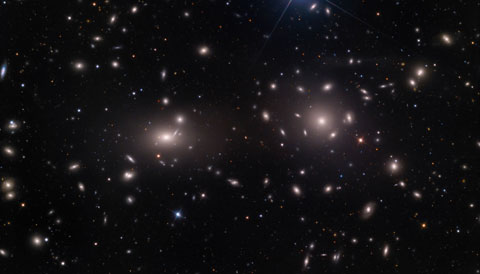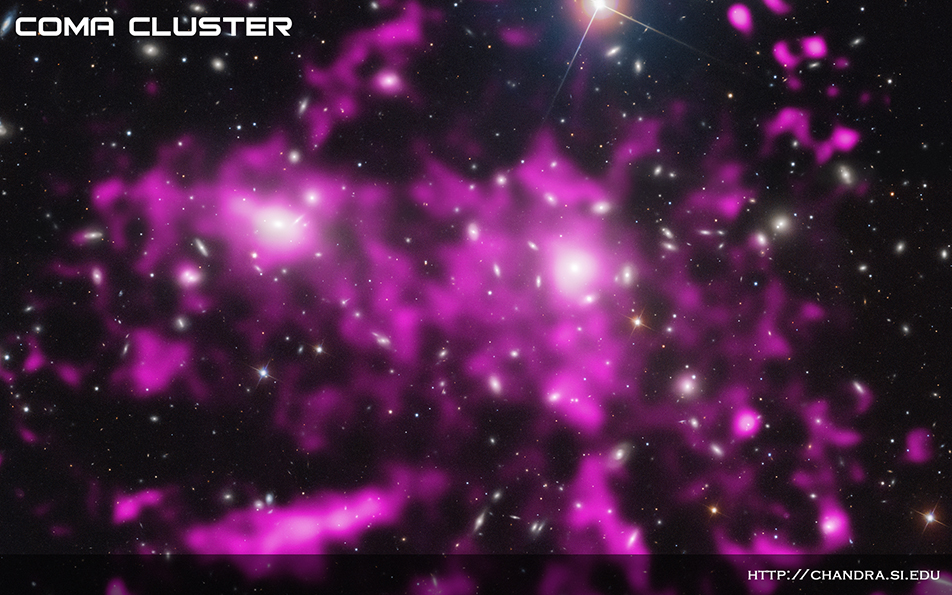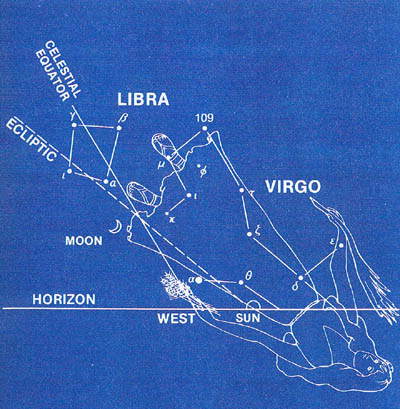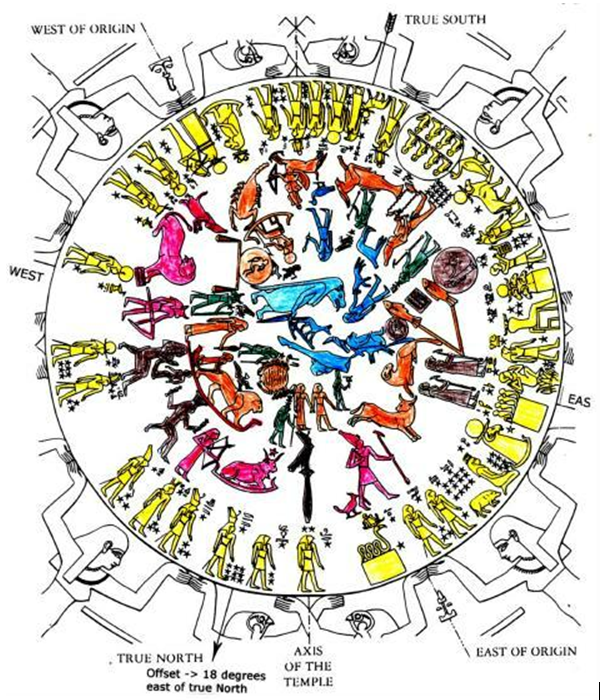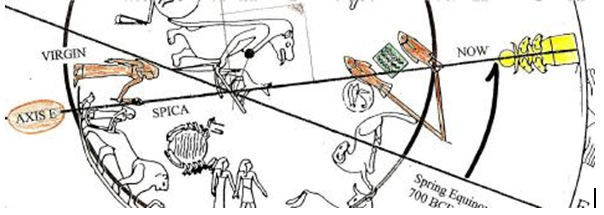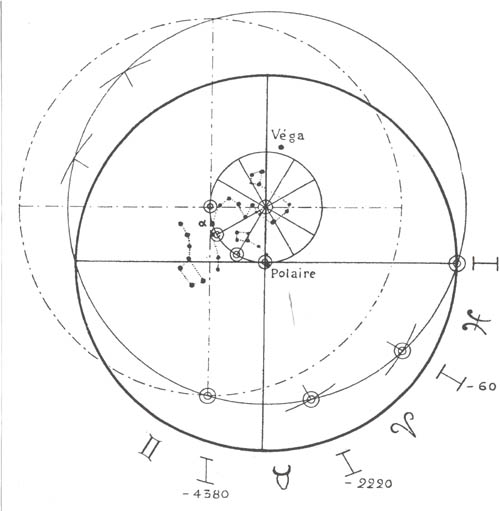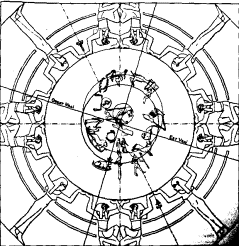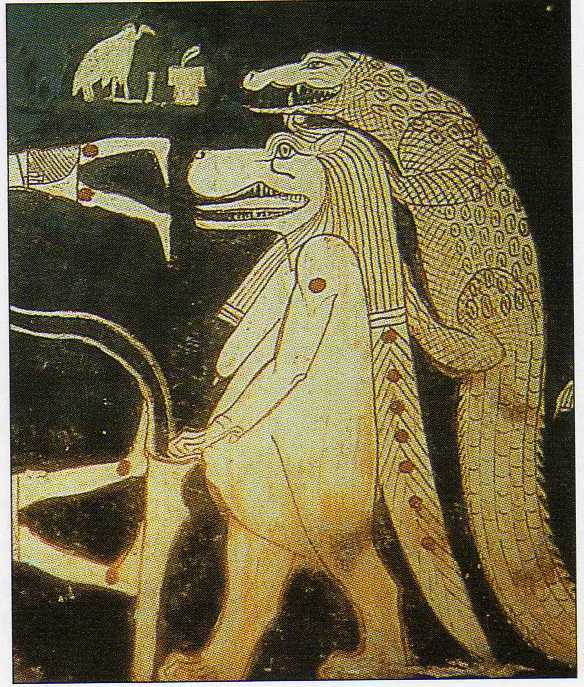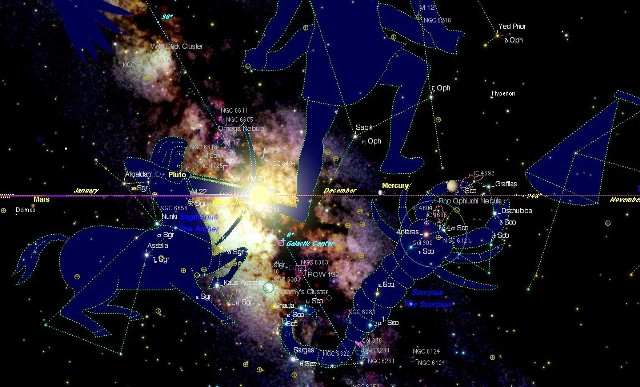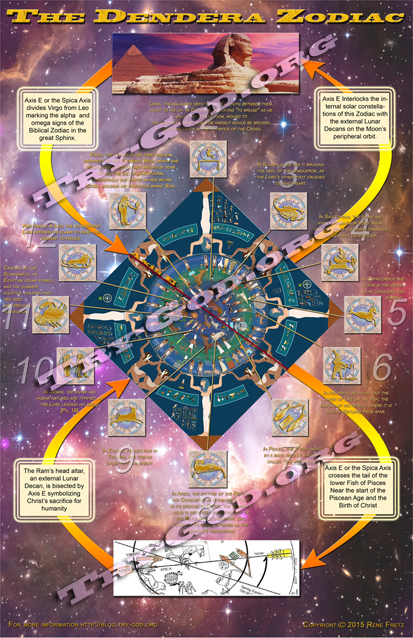The Celestial Prelude and the Biblical Astronomy of the Birth of Christ
Our previous blog post on the Coma Supernova marking the Birth of Christ as the General Sign of The Celestial Prelude was visible for a period of about 275 years, as it has been documented in history. The Second part of these heavenly signs that allowed the Magi to recognize the celestial markers of the birth of Jesus Christ are the Specific Signs of the Celestial Prelude. These signs revolve around the triple conjunction of Jupiter and Saturn in 7-6 BC, that gave the Magi the stellar keys to breaking the code that sent them on their 800 mile journey to Jerusalem and Bethlehem to pay homage to the young king of kings. A major departure from the confusion around the “Star of Bethlehem,” bringing a new perspective to the celestial signs surrounding the birth of Christ involves a fresh look at the triple planetary Conjunction of Jupiter and Saturn in Pisces, in 7-6 BC. Historically, this series of unions has been taken for Jesus’ actual time of birth by some, and also accepted as just too early to mark his birth by others. The debate between these two major camps continues today. This study will show, among other things, that while this celestial pageantry does not literally mark the actual time of the birth of the infant Jesus, we cannot discount the impact of these signs on the Magi in their search for the revelation of the promised seed. How did the Magi know what to look for in this search? What if God left a series of clues for those with eyes to see and ears to hear, making provision so they wouldn’t miss this momentous occasion? This is precisely the proposal of this study that herein lies the true significance of these rare unions of Jupiter and Saturn in Pisces in 7-6BC. Based on the details of this specific set of preliminary signs, the Magi were alerted to the series of planetary Conjunctions and heavenly signs announcing the actual birth of Christ.
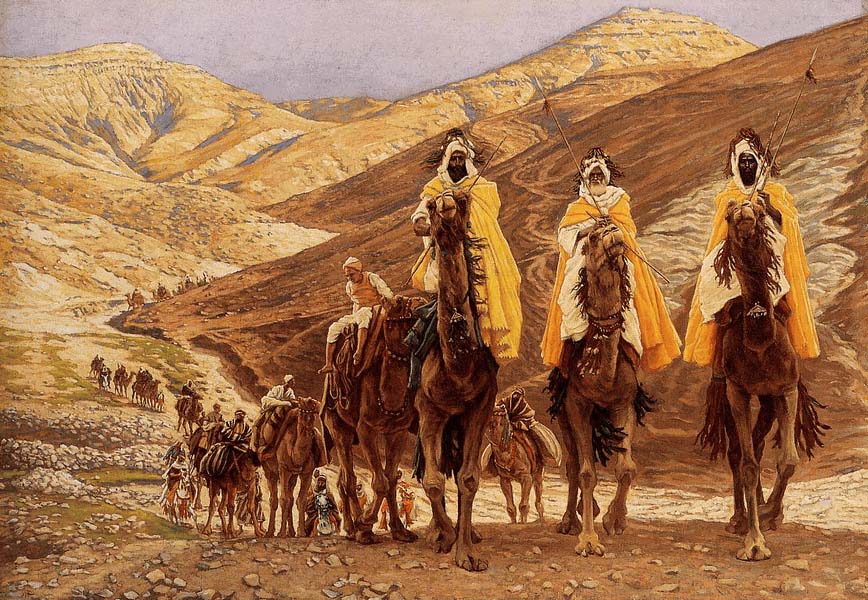
The time frame we will be looking at for this Celestial Prelude is from 7-5 BC and the first thing that we will notice is that the signs marking the birth of Christ are astronomical in nature. They were not some miraculous manifestation only visible to the Magi, as some have said. The details of this study make this obvious. Secondly, the type of sign we’ve found is a series of planetary Conjunctions. This is a departure from the General Sign of the Celestial Prelude, which was a supernova in the head of the infant in the decan Coma. This is the initial clue as to what the Magi were prompted to look for, not a comet, like Halley’s Comet which some have attempted to make a case for. The dates for Halley’s Comet are too early, to coincide with the birth of Christ, although it does fall within the time-frame of the General Sign of the Celestial Prelude, about 5 years before this triple union of Jupiter-Saturn. The foregoing and concurrent supernova in Coma was meant to draw the peoples attention to this general time-frame of the birth of the promised seed, and the specific signs revealed its inherent details to the Magi. The Charts below compare the signs of 7-5BC, with those of 3-1BC, in greater detail. For our purposes here, we will focus mainly on the triple planetary Conjunction of Jupiter-Saturn from 7-5 BC in comparison with the triple planetary Conjunction of Jupiter and Regulus in 3-2 BC. We will add a few other signs to more fully sketch out and establish this comparison. The Summary of the Celestial Prelude below wraps up the indicators provided by the heavenly signs involved with these Jupiter-Saturn unions, pointing to the signs of 3-2BC marking the birth of Jesus Christ.
The Celestial Prelude of 7 BC to 5 BC
| Dates BC | Conjunction of Planets | Constellation |
|---|---|---|
| May 27th, 7 | Jupiter-Saturn | Pisces |
| Sept. 15th, 7 | Jupiter, Saturn; [ring cycle], Sun & Earth aligned. | Pisces |
| Oct. 5th, 7 | Jupiter-Saturn | Pisces |
| Dec. 1st , 7 | Jupiter-Saturn | Pisces |
| Feb. 25th 6 | Triangular massing of Jupiter, Saturn & Mars | Pisces |
| Mar. 5th , 6 | Jupiter-Mars | Pisces |
| Mar. 23rd, 5 | Total Lunar Eclipse | Virgo |
| April 15-20, 6 | Lunar occultation | Series |
| Sept. 15th, 5 | Total Lunar Eclipse | Pisces |
This series of planetary Conjunctions involving Jupiter certainly drew the focus of the Magi to the king planet, which they recognized as “his star.” They would have noted Jupiter’s triple planetary union with Saturn, and we know today that this union was caused by Jupiter’s retrograde motion. The Magi would have noted these triple unions involving Jupiter in both 7-5 and 3-2 BC. Therefore, the Magi would have been watchful not only of Jupiter’s motion, but vigilant also for a triple union associated with its motion. Perhaps we can begin to see the wisdom of the Heavenly Father’s choice of stellar signs, which make up this celestial epistle of introduction, for the Magi to mark the signs surrounding Jesus’ birth. These clues alone would have provided the Magi much on their way to finding the Messiah, but God had a lot more in store. After these Jupiter-Saturn triple Conjunctions, there was a massing of planets including Mars, after which followed a key Conjunction involving Mars. Finally, on the heels of this Conjunction including Mars, in the next month came a remarkable series of lunar occultations, followed by two total lunar eclipses in 5 BC. These preliminary signs not only provided the Magi with the blueprints they would need to recognize the celestial signs identifying the time frame of the birth of Christ in 3-2 BC, but they also set the pattern of Total Blood Moon Lunar eclipses, marking the victorious return of Christ. The fact that the signs of this dress rehearsal unfolded over a period in excess of two years was also a clue of what to expect, when the curtain actually arose on the celestial pageantry of the birth of Christ. With a period of exactly 2 years from Sept, 15th of 7 BC to Sept. 15th of 5 BC as seen in the chart above, setting the stage for two Jupiter-Venus Conjunctions bracketing the heavenly signs marking the actual birth of Christ between August 31st, 3BC and Aug. 21st of 1 BC, we can see how the Magi would recognize these specific markers leading them to the promised seed-Jesus Christ. Also, the fact that these signs almost all occur in Pisces, is interesting due in part to an ancient eastern tradition, that the influence of the sign of Pisces, the fishes presided over the land surrounding and including Israel. Others believed that Pisces symbolized the House of Jacob, and with the obvious presence of the King planet Jupiter, would spell out why the Magi came to Jerusalem looking for the King of Israel. This relationship of Jupiter-Saturn heavenly signs related to Israel stretched back in history even to include the births of Abraham and Moses. In the following reference to Jupiter-Saturn unions related to the birth of Moses, R.H. Allen has probably isolated a quote from Abrabanel referenced by Kepler;
“The Rabbis held a tradition, recorded by Abrabanel in the 15th Century, that a similar Conjunction took place three years previous to the birth of Moses, and they anticipated another at their Messiah’s advent.”7 [emphasis mine]
The Triple Planetary Conjunction of Jupiter-Saturn in 7 -6 BC
A major contemporary proponent of the 7-6 BC triple Conjunction of Jupiter and Saturn marking the actual time of Jesus’ birth is David Hughes. He is convinced that Jesus was born September 15th of 7BC, based on this series of unions of Jupiter and Saturn. He has taken note of how these conjunctions point to the birth of Christ, following a modified version of Kepler’s view. However, he admits a feeling of uncertainty about the final summaries of his hypothesis, because Jupiter could never have been seen as one star, as their closest approach was only 0.98 degrees. Hughes confusion is typical of that surrounding the view of the “Star of Bethlehem,” which at least in part is based on the lack of recognition and separation of the general and specific signs marking Jesus’ birth. As we can see, the specific signs of the Celestial Prelude, and their corroboration of the signs from 3-2 BC, meet all the provisions of the genuine signs marking the birth of the Messiah. With the 7-6 BC triple union of Jupiter and Saturn setting the pattern of the Specific signs of Celestial Prelude, let’s take a more detailed look these preliminary signs in the triple Conjunction of Jupiter and Saturn.
i. May 27th, 7BC Jupiter and Saturn in Conjunction in Pisces, with the Sun and Mercury in Gemini, Venus in Cancer, Mars in Virgo and Moon in Pisces. [Fig. i.]
In this first preliminary sign we find Jupiter the scepter and King planet in Conjunction with Saturn, symbolic of Satan, in Pisces near dawn in the eastern sky, as a result of Jupiter’s proper motion.

The first thing to notice about the specific signs of the Celestial Prelude from 7-5 BC, is that this first Conjunction of Jupiter and Saturn shows the authority of the scepter of God’s kingdom resident with Lucifer in his first estate as the Angel of light. He was set apart and alone in his authority from the celestial signs that follow, outside of the clearly marked two-year period from September 15th 7BC to September 15th 5BC, containing the rest of these specific preliminary signs.
Its purpose is to mark the first estate of Lucifer as the original bright and Morning Star, second only to God the Creator, in the 1st heaven and earth-head over all the angels as the angel of light, prior to the Creation of Man in the Garden of Eden.. Let’s take some time to digress here and set the background of Lucifer’s history according to the accuracy of God’s Word written in the stars, and in Scripture. This first sign refers to Lucifer in his original estate as the “star of the morning” as Isaiah 14 tells us:
Isaiah 14:12
How art thou fallen from heaven, O Lucifer, son of the morning! how art thou cut down to the ground, which didst weaken the nations!
The demise of Lucifer is indicated in the astronomical mechanism known as the precession of the poles, with the star Thuban: alpha draconis, the brightest star in Draco the dragon, as the original pole star. The precession of the poles indicates Lucifer’s demise, because the pole star has moved from Draco and now resides near Polaris, or Al Ruccaba of the “little flock” of Ursa Minor. The pole star between the feet of the crowned king Cepheus, depicts Jesus Christ in at least two ways. First, as the prominent king, and new Chief Cornerstone, since Cepheus is the crowned king, even as Regulus the king star, is between the feet of Leo, the Lion king of Judah; [Gen.49:8-10]. Cepheus also means ” the branch” and is depicted as a king holding a branch/sceptre at the north pole, [Jer. 23:5, 33:15]. Secondly, and with spiritual hindsight, he is the head of his spiritual body, the Church. God put all things under Christ’s feet, indicating his seven-fold lordship over all Creation; [Eph. 1:20-23]. The exception to this, of course is God Himself, Who Christ ultimately subjects himself to [I Cor. 15:27-28], avoiding the pitfall of Lucifer’s egomaniac demise. The Decan of Cepheus depicts the Royal king and redeemer coming quickly to rule, enthroned in the highest, at the northern polar reaches of the heavens. With his scepter in hand and the Northern Pole Star symbolizing all things in Creation under his feet, as seen in the capstone of the Great Pyramid, we have powerful imagery of the Authority and Dominion of the King of Kings. As the principles of Biblical Astronomy tell us, the star names relate the narrative of each constellation they appear in. There are 19 main stars in Cepheus, 3 of which we focus on here.
Zech. 6:12-13 “Thus speaks the Lord of Hosts, saying behold the man whose name is the Branch; and he shall grow up out of his place, and he shall build the Temple of the Lord.” v. 13 “Even he shall build the Temple of the Lord; and he shall bear the glory, and shall sit and rule upon his throne; and he shall be a priest upon his throne; and the counsel of peace shall be between them both.”
Here we see the promised seed of the woman clothed in the celestial royalty of absolute dominion over all Creation. The name “Cepheus” has possible Egyptian linguistic roots in “Cheops” or Khufu the Pharoah whose Dynasty saw the construction of the Great Pyramid. In the Dendera Zodiac, Cepheus is known as Pe-Ku-hor; meaning “one coming to rule” which is a consistent theme of the star names below. The 3 primary stars of Cepheus are as follows;
1. Al Deramin-he who comes quickly from the right Arm or Hand of the Father-The Hand of Blessing.
2. Al Phirk-signifying the Redeemer and the stars of his flocks [Ursa Minor and Major].
3. Al Rai-The Shepherd who bruises or breaks. [Ps. 23; and the 7 Redemptive Names of God embodied in the Shepherd.]
Thus we have the Redeeming Shepherd coming quickly from the right hand of God who bruises or breaks, to redeem his flocks. An interesting note regarding these 3 primary stars at the North Celestial Pole, as the Pole star recedes according to the Precession of the Poles, each of these 3 brightest stars in Cepheus will inherit the title and function of Pole star, currently occupied by Polaris of Usra Minor. Starting around 4000 AD in 1500 year intervals, these primary stars of Cepheus will occupy the coveted “Pole Position;”
1st Al Deramin
2nd Al Phirk
3rd Al Rai
These signs and constellations at the North Pole or circumpolar stars were reflective of the “Royal Family” since they never set, and their narratives are some of the most popular in the mythology of the Ages. Perseus’ deliverance of Andromeda from the dread Sea Monster Typhon/Cracken, is a good example. Even in this veiled mythology we can see the light of the narrative of the returning redeemer shining through to deliver his flocks. Bullinger refers to this precession of the North pole and Al Ruccaba specifically as follows:
“Although the star does not revolve like the others, the central point in the heavens is very slowly but steadily moving. When these constellations were formed the Dragon possessed this important point, and the star alpha, in Draco, marked this central point. But by its gradual recession, that point is sufficiently near this star Ruccaba, in the Lesser Sheepfold, (Ursa Minor) for it to be what is called “the Polar Star.” But how could it have been known five or six thousand years ago? How could it have been known when it received its name, which means the turned or ridden on? That it was known is clear: so likewise was it made known in the written Word that the original blessing included not merely the multiplication of the seed of the faithful Abraham, but it was then added, “And thy seed shall possess the gate of thy enemies,”1 [Gen. 22:17].
This is an obvious indicator of the accuracy of these God-inspired star names [Ps. 147:4], dating back to antiquity, showing divine insight inherent in the heavens from earliest times. This establishes a previous point that the purpose of God’s Revelatory Astronomy stands in juxtaposition to the evolutionary theories governing modern scientific Astronomy. Bullinger’s reference also shows the witness of the stars in concert with that of the Scriptures that is a consistent testimony throughout this study, and a primary theme of our blog and web-site.
This stellar transition of the pole star reflects an aspect of the transition of power from the fallen Morning star, who presided over ten categories of precious stones, representing angels [Ezek. 28:14], to the Risen Morning Star [Rev. 22:16], presiding over 12 categories of precious stones, representing the 12 tribes of Israel, the 12 signs of the zodiac, and later the 12 apostles at the foundations of the Age of Grace and the New Jerusalem.
Following the triple Conjunction of Jupiter and Saturn in the specific signs of the Celestial Prelude was a unique triangular massing of planets. Kepler referred to the Feb. 25th, 6BC triangular massing of planets; Jupiter, Saturn and Mars, as the “decisive Conjunction of 6 BC that opened our precessional age of Pisces.” As we have noted, Kepler also advanced the idea that the Magi were guided to Judea by the appearance of this series of Conjunctions. This could make him a larger presence in the history of Astronomy, even more than what he is already accredited with, because of the spiritual nature of this insight. And there are other historical figures who should be recognized for their input on this subject. The famous Roman poet Virgil is worthy of consideration here from some of his early work in his Eclogues-10 volumes of his pastoral verses. Virgil’s, good reputation in the ancient astronomical community, was seen in the honorary title of a “prophet of Christianity” given by his peers, for declaring that a great new order of centuries was now being born during the period of this Jupiter-Saturn triple union. In his Fourth Eclogue, he declared the return of the Golden Age, showing the influence of the traditional prophecy of the coming redeemer in Greece at the time: “Now the Virgin returns, now a new generation descends from heaven on high. Only thou pure Lucina, smile on the birth of the child, under whom the iron brood shall first cease, and a golden race spring up throughout the world.”6 (emphasis mine)
The summary below shows the specifics of the signs that led the Magi to the birth of Christ.
12 Characteristics of the Celestial Prelude
- Jupiter was clearly marked as “his star.”
- Jupiter was involved in a triple planetary Conjunction.
- Jupiter was involved in a series of planetary conjunctions.
- Jupiter’s retrograde motion would play a key role.
- Jupiter’s triple union was followed by a massing of planets.
- This massing of planets was followed by a Mars Conjunction.
- The Jupiter-Mars Conjunction was followed by a series of lunar occultations, and total lunar eclipses.
- This series of conjunctions would last about two years.
- The annual twenty days when the Sun is in Virgo would be a key.
- The September 15th alignment of Jupiter, Saturn the Earth and Sun in 7 BC that occurred in the evening at sunset, directed the Magi’s attention to the end of the 20-day period when Virgo was “clothed with the Sun.”
- The second lunar eclipse on September 15th of 5 BC established that the Magi should be watchful of lunar activity during this time. This framed the 42 minute period between Sunset and Moonset on the only day of the year when Virgo “was clothed with the Sun and the moon under her feet.” [Rev. 12:1-5]
- The September 15th Heliacal Rising of Jupiter and Saturn foreshadowed the Heliacal Setting of Spica, located between the setting Sun and Moon in Virgo, identifying a 30- minute period when the birth of Christ happened.
As the first born of the Church-the Spiritual Body of Christ, Jesus is certainly the Head of a new and everlasting “golden race” of Saints who will cast the serpent’s seed under foot. [Gen. 3:15] It is however the Magi that belong at the top of this list as the only Gentile Astronomer-kings to accurately recognize and act on what they believed concerning the birth of the king of kings. Their role in this historic and epic saga of the long awaited promised seed cannot be overlooked as they brought powerful recognition of the birth of Christ to the world and the local powers in Jerusalem. As we confess with our mouths the Lord Jesus Christ, and believe in our hearts that God raised him from the dead, our sins will be forgiven and we will be saved, joining that golden race of Saints and inheriting all the everlasting benefits that go along with this honor.
Footnotes
1. Witness of the Stars E.W. Bullinger, p. 152
2. Virgil’s Fourth Eclogue
3. R.H.Allen, Star Names their Lore and Meaning, p. 341

